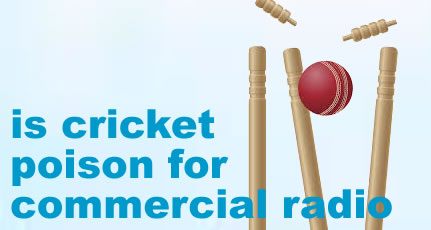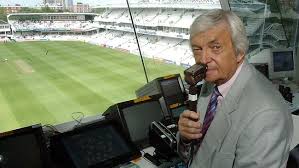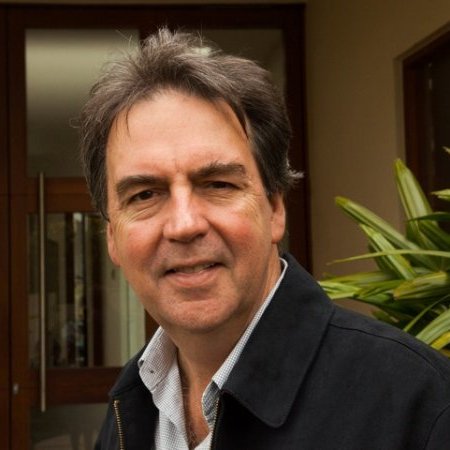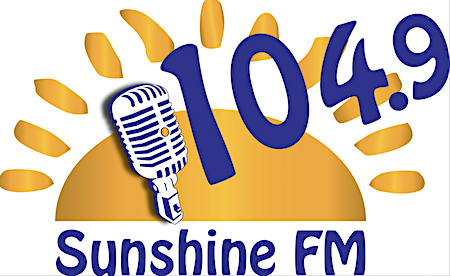Fairfax is Stumped

By Brad Smart
You know it has taken 3AW Melbourne six full months of hard grind to get its ratings back to where they were prior to the onslaught of cricket last year.
Cricket is poison for commercial radio.
You don’t have to be a programming genius to work that one out, and, most industry observers were ‘stunned’ when Fairfax announced its cricket contract as a programming coup, and, supposedly, a ratings saviour.
 If people are ‘dyed in the wool’ cricket fans, they’ll find a way to watch it on TV.
If people are ‘dyed in the wool’ cricket fans, they’ll find a way to watch it on TV.
Heaven forbid, but if these fans actually have to go out and about on those hot summer days, they now have a choice of two radio stations in each metro area with full-on cricket coverage.
Big dilemma for the listener – “Do I listen to cricket that’s uninterrupted on the ABC or do I listen to the coverage with all those wonderful commercials on Fairfax stations?” Tough choice, granted!
What bright spark at Fairfax came up with the idea of signing the cricket in the first place, and, why have they still got a job?
Only a very small minority of people are passionate enough about listening to the cricket to spend a long time listening.
The reality is that most people don’t give a damn. In fact, they find it boring.
It’s true that some listeners might want the score updated from time to time, but that’s about it.
Most people tune to talk stations for opinion and discussions on issues that might affect them.
 That’s why Fairfax has people, like Neil Mitchell at 3AW, earning the big bucks.
That’s why Fairfax has people, like Neil Mitchell at 3AW, earning the big bucks.
His job is to pull and hold an audience all year round and he’s done it very successfully for many years.
So, if you want to make Mitchell’s job a whole lot harder, you simply block schedule a low-interest niche program, like cricket, across his show a couple of days a week for four or five months, and, see what’s left at the end.
Blind Freddy could have told you last year what was going to happen from the day the network took the cricket coverage, and, it did.
The ratings for Fairfax talk stations started heading south and stayed there until stumps were finally drawn on the cricket coverage and well beyond.
Only when the cricket season came to an end could presenters, like Neil Mitchell, start to do their job again and begin winning the ratings back for the network.
So, after last year’s disaster, you’d think everyone inside the organisation would realise that the cricket experiment had failed, and, treat it as a lesson well learned.
Not so.
Just when the Melbourne ratings, in particular, were finally climbing out of the primeval swamp, it seems the dreaded monster is about to return for summer.
The substantial public backlash that was levelled at Fairfax stations, when the cricket took over last year, was not unexpected, at least by the rest of the industry, who were more than happy to sit back, sip martinis and watch Fairfax suffer. It was the ‘silly season’ spectator sport!
So, by now, you’d have thought that Fairfax execs would have found a way out of what is lining up to be yet another ratings disaster nationally.
But, no.
Instead, last year’s major audience backlash over the cricket is supposedly being addressed this year by leaving the full version of their normally high rating and proven (at least in Melbourne and Perth) talkback programs, solely on the digital band.
These programs are usually simulcast on AM and digital.
If they’re really going to follow this strategy, you then have to ask yourself, did anyone at Fairfax stop and think that the audience for their talkback programming is an older demographic?
Older people are less likely to embrace new technology, such as going out and buying a new digital radio to listen to their favourite talk program.
Despite all the hype, digital radio is still very much in its infancy, especially when it comes to older listeners.
Relegating popular programs aimed at a 40+ audience to the ‘digital desert’, when the vast majority of its existing audience is familiar and comfortable with them being on the AM band, is tantamount to casting these normally high-profile shows into obscurity.
Why not just put the cricket on digital if it’s so important to the network?
Well, Harvey Norman has become the naming sponsor, and, presumably they won’t see enough ‘bang for their buck’ unless the cricket dominates the AM stations around the country.
What’s being forgotten here is that there are scores of other smaller, but loyal, advertisers, in each metro area, who support the network’s talk programs regularly throughout the year.
They’re Fairfax’s regular ‘bread and butter’.
How are they going to feel about being banished to the digital wasteland for the summer?
The most sensible move is for Fairfax executives to admit, at least amongst themselves, that they made a major tactical error with the cricket and ditch it.
Unless they have really screwed up the drafting of their licensing contract, a decisive move would be far better when measured against the time required to get their flagship programs back on track with their listeners after the cricket season, and, to restore confidence amongst their regular advertisers.
Even if Fairfax had to wear the annual licensing fee to the ACB, it would probably be a small price to pay compared with rebuilding their network ratings and revenues, all over again, once the cricket season ends.
Editor Note: Prior to publication of this article Radio Today reached out to Fairfax to offer an unedited response/reply either as part of, or following this article.
 About The Author:
About The Author:
Brad SMART has been a journalist, consultant, author, broadcaster, film director and was the former owner of the Smart Radio Network throughout Queensland. Brad can be contacted on email here.


